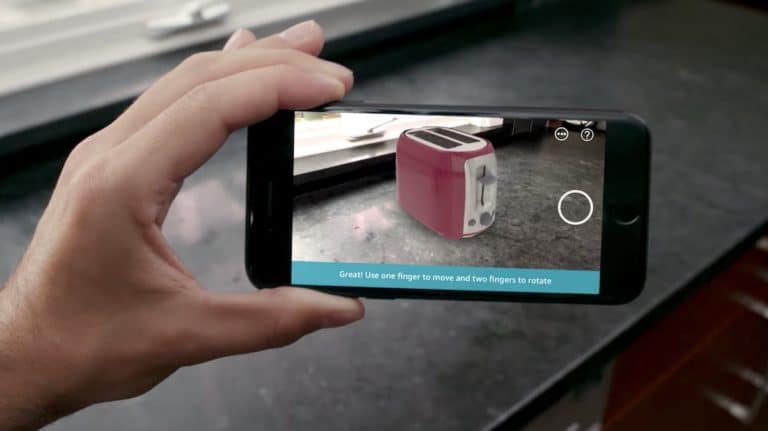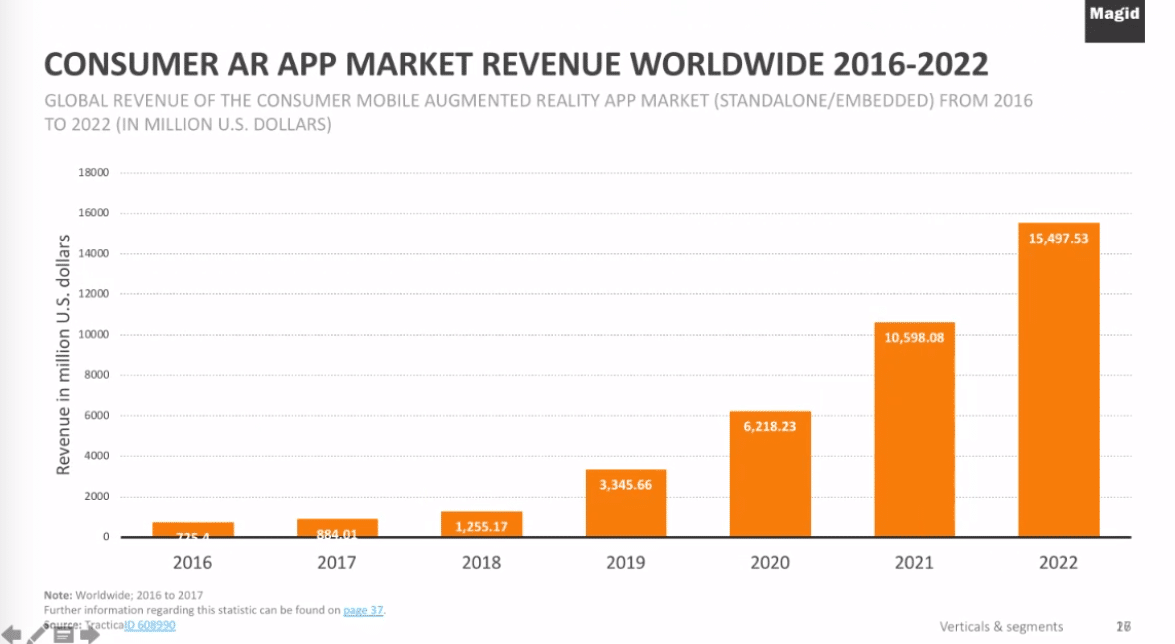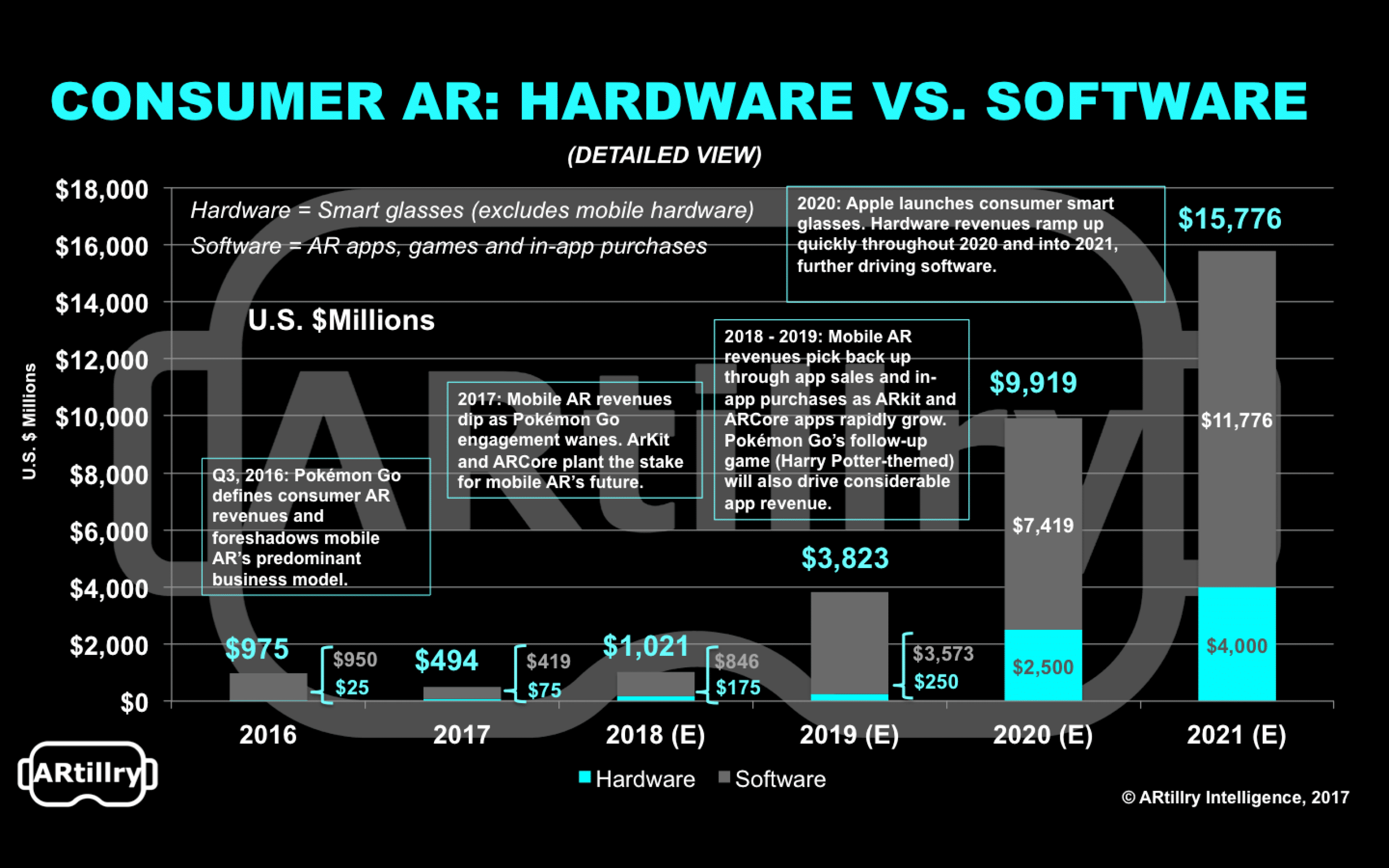
Consumer AR is off to a relatively slow start, but it’s showing some traction. According to Magid, 27 percent of consumers have used at least one AR app, other than Pokemon Go.
If we apply that to the population of the U.S. (roughly 300 million), it comes out to about 81 million consumers. That seems more than expected and is a promising start for AR. We also know from Apple’s earnings call last week that about 2000 ARkit apps have been built.
One takeaway from these data is that more education and acclimation are needed. If AR is to reach more meaningful and ubiquitous levels, it has to become more of a user habit. It’s currently stuck in early adopter phases, and hasn’t captured the interest of the mainstream.

One missing variable here is active use. The 27 percent figure is rather binary — either survey respondents have tried it or they haven’t. There’s no indication of frequency. And that’s going to be a big question mark for AR’s sustainability, and the business models that are built around it.
For example, advertising in AR will be a function of reach and impressions — those are the metrics that rule ad buying today. And those figures will be a result of not only AR downloads but frequency. And AR will be challenged in that it’s a snack, not a meal (short sessions).
Magid also reports consumer app revenue, which it projects to reach $15 billion by 2022. This aligns with ARtillry Intelligence’s forecast where mobile AR software (app revenue), tracks similarly. Both charts are below for comparison, and stay tuned for lots more data and analysis.


For a deeper dive on AR & VR insights, see ARtillry’s new intelligence subscription, and sign up for the free ARtillry Weekly newsletter.
Disclosure: ARtillry has no financial stake in the companies mentioned in this post, nor received payment for its production. Disclosure and ethics policy can be seen here.
